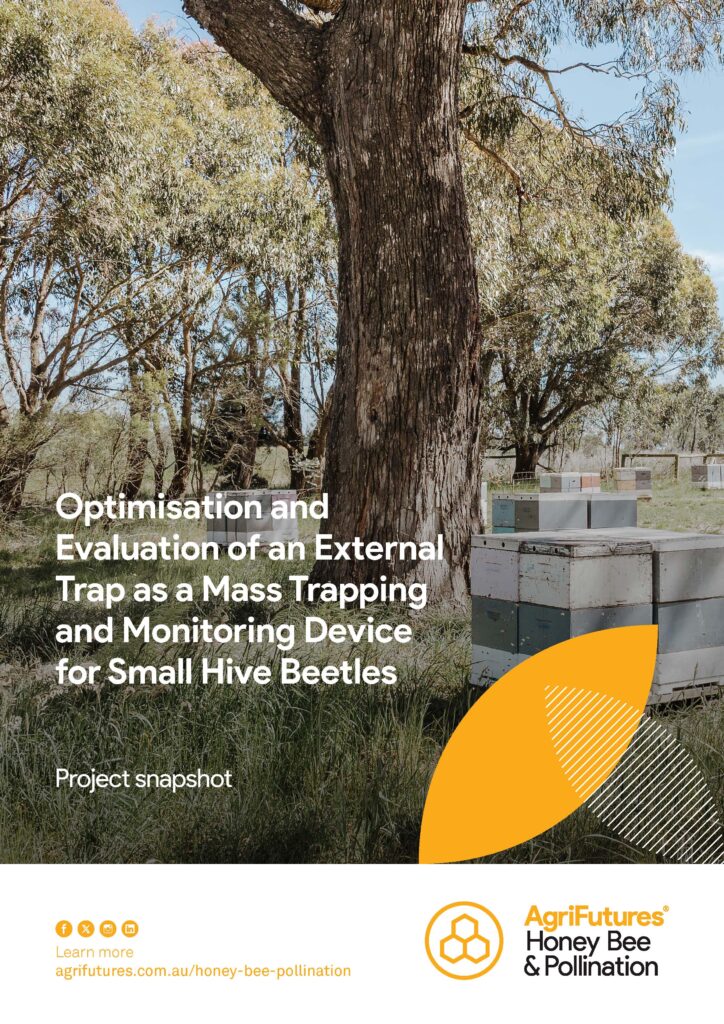Determining the impact of Varroa on virus transmission in Australian bees
This research aimed to contribute to ongoing surveillance of the Australian honey bee virus landscape as varroa establishes and spreads.
 HONEY BEE & POLLINATION
HONEY BEE & POLLINATION 
3 pages
Published: 27 Nov 2025
Download report PDF
DownloadThe small hive beetle (SHB) (Aethina tumida) poses a serious threat to the Australian honeybee industry, which is valued at $4.6 billion annually for its honey products and pollination services to horticulture and crops. Current control methods for this pest include in-hive traps and pesticides, but these have practicality and toxicity issues, respectively. This next-phase project, led by Agriculture Victoria, aimed to improve this trap by developing and field validating a synthetic lure based on the honey-fermentate odour. The work would also include developing a suitable lure-dispensing technology (sachet dispenser) to improve longevity of the lure and the trap design to enhance beetle retention capacity.
Key learnings
– Despite a concerted effort in designing and testing 29 prototype lures over two seasons across six field sites, the project team were unable to develop a field-effective synthetic lure for adult SHB
– The project did not result in a field-effective trap featuring a synthetic lure, but it successfully established a robust scientific approach aligned with developing a lure and trap for this pest
– Improvements to honey fermentate longevity might be achieved through several methods, including manipulating the amount of yeast, the balance of sugar and honey substrate, and the addition of a nitrogen source.